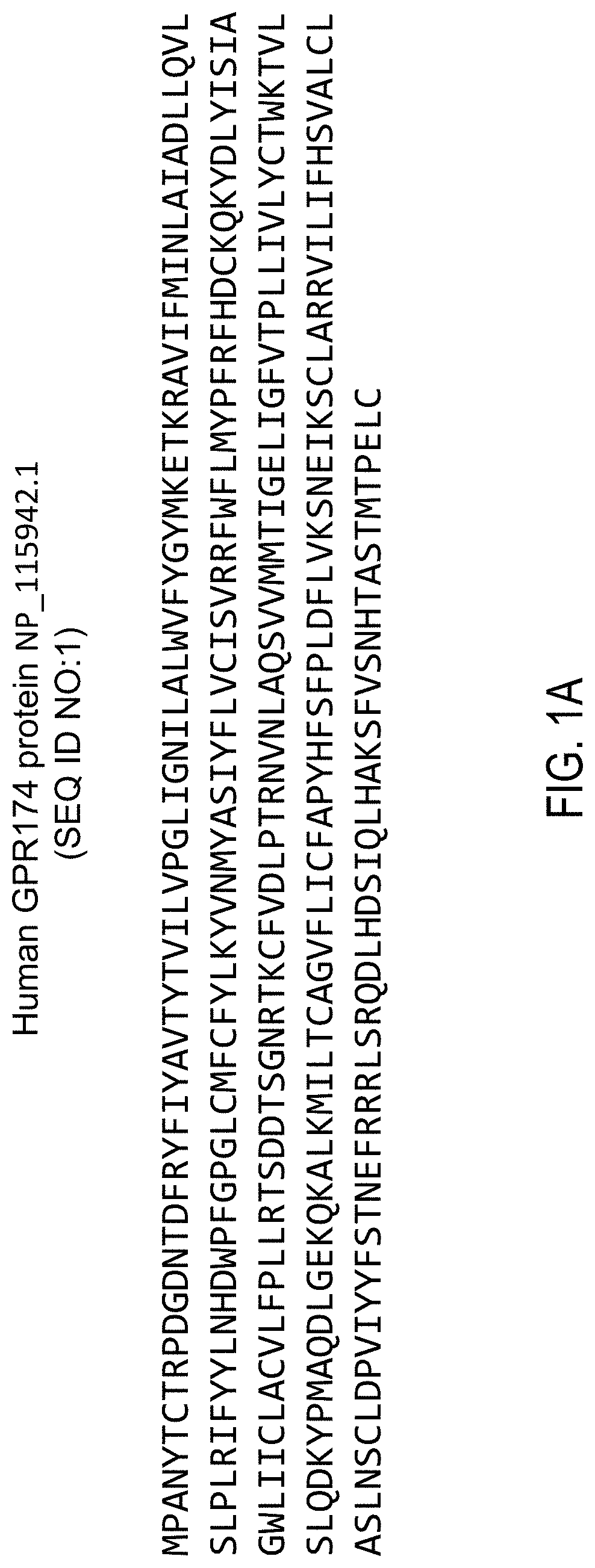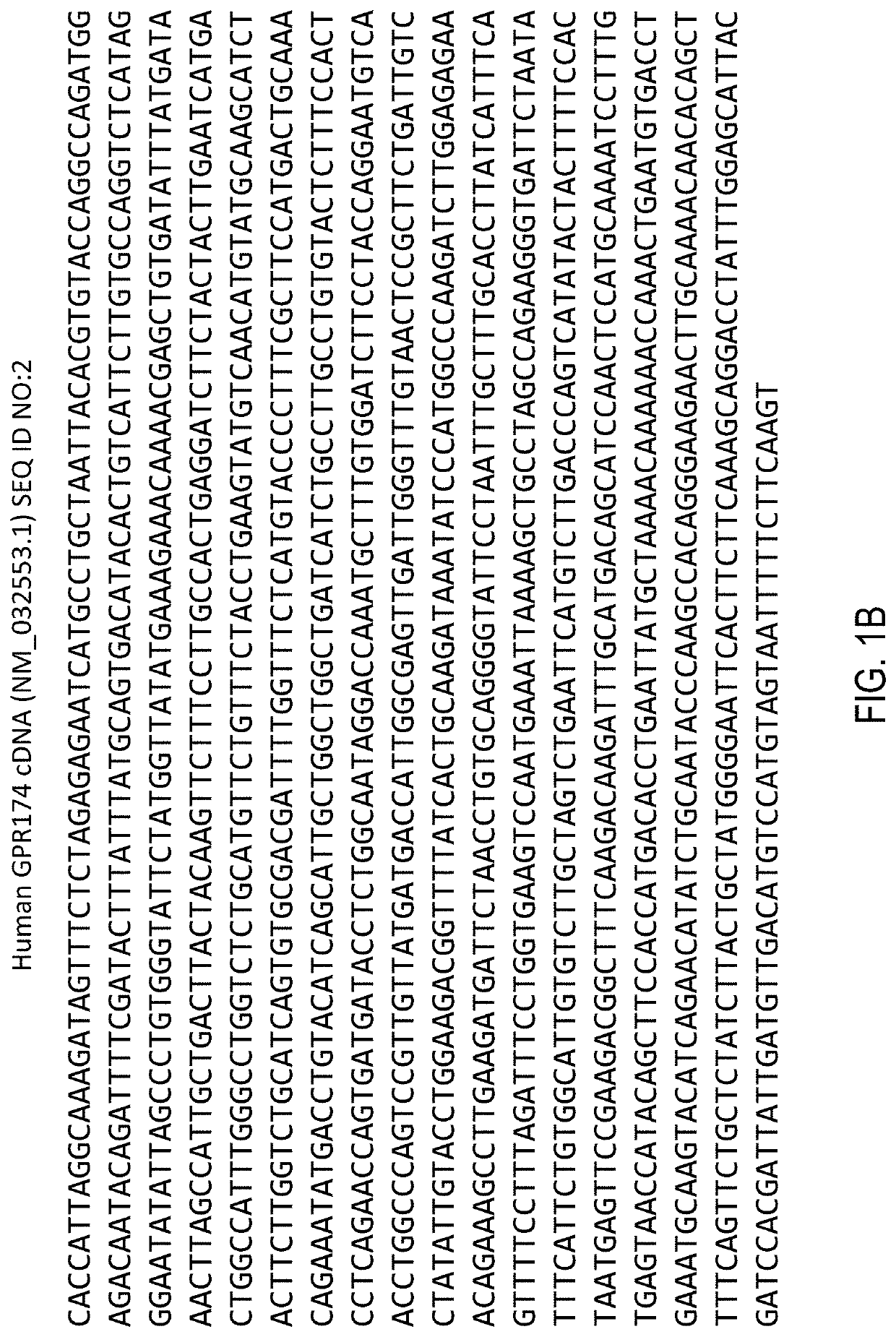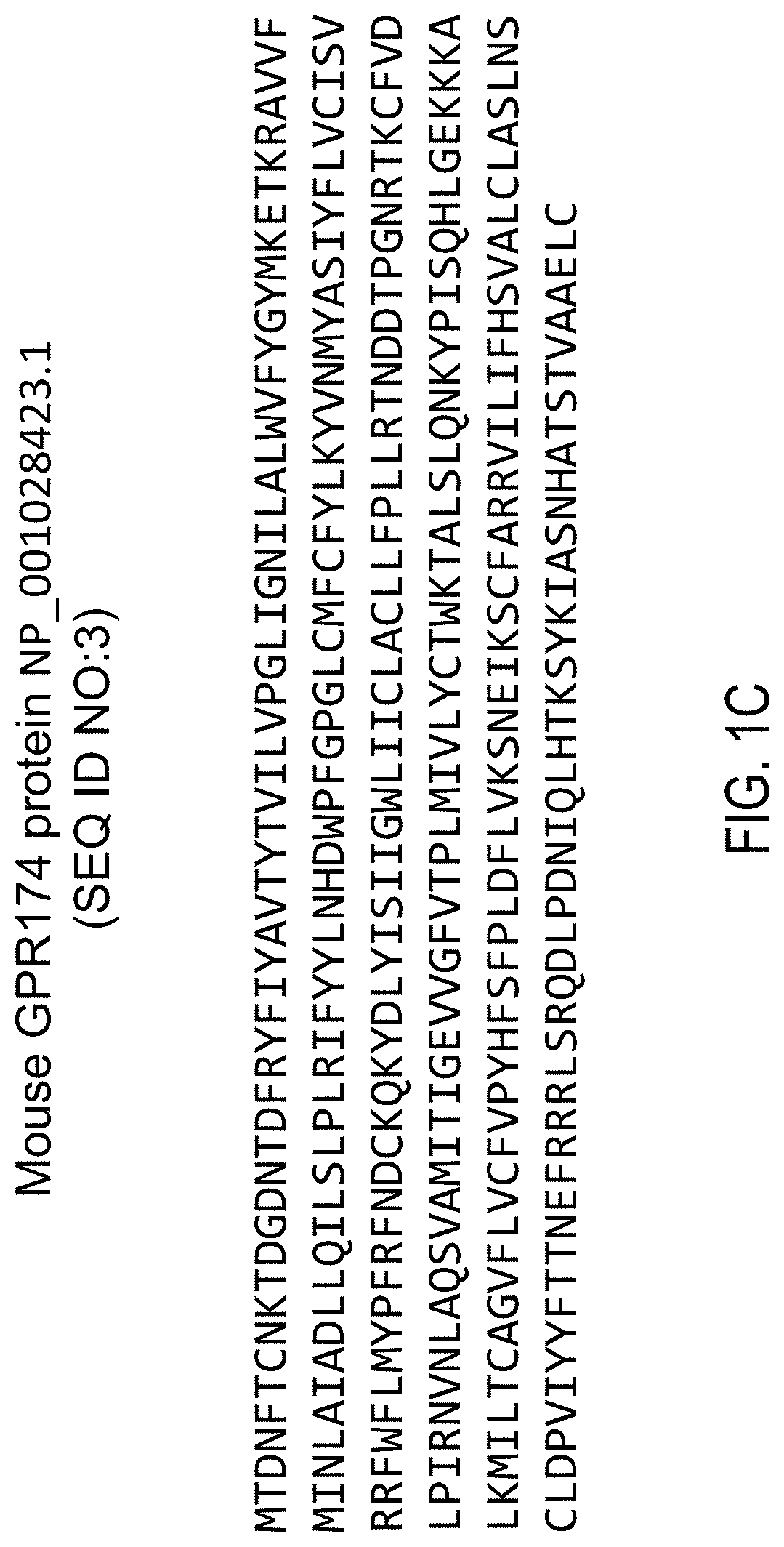Inhibitors of GPR174 and Uses Thereof
- Summary
- Abstract
- Description
- Claims
- Application Information
AI Technical Summary
Benefits of technology
Problems solved by technology
Method used
Image
Examples
example 1
CRA and CRA Validation
[0735]The inventors used a CRA similar to that described in U.S. Pat. No. 7,309,576 and O'Dowd et al., J. Biomol. Screen. 12:175-85, 2007 to identify compounds that are capable of interacting with GPR174 using a library of approximately 370,000 chemical entities. Briefly described, the CRA assay described in U.S. Pat. No. 7,309,576 involves artificially inserting a NLS into the dopamine D1 receptor (DRD1), which allows the receptor to traffic from the cell membrane to the cell interior, and that the binding of antagonists to the receptor retained the receptor at the cell surface, while removal of the ligand allowed the receptor to continue to internalize from the cell surface. Both antagonists and agonists that selectively bound the receptor retained the receptor on the plasma membrane. GPR174 constructs were generated for use in a CRA-based compound screening assay. From this screen, the inventors initially identified compounds of formula I-VI, as described he...
example 2
Assays for Identification of a GPCR Signaling Pathway
[0739]To identify the signaling pathway(s) that an activated GPCR utilizes to elicit its biological response, a multitude of assay technologies have been developed (Siehler, Biotechnology 3:471-83, 2008 and references within). The Gas family of G proteins stimulates the activity of ACs, whereas the Gai 1-3, Gαo, and Gaz members of the Gai family of G proteins inhibit the activity of ACs. ACs generate the second messenger cAMP using ATP as a substrate. A number of cAMP assay kits are available that measure the levels of cAMP (Siehler, Biotechnology 3:471-83, 2008 and references within). To detect the activation of Gas coupled GPCRs, increases in cAMP levels are typically measured 15-60 minutes after agonist stimulation (Williams, Nat. Rev. Drug. Discov. 3:125-35, 2004). To measure the inhibition of ACs by the Gαi family of G proteins, cells are typically treated with forskolin, a nonspecific activator of ACs, to raise levels of int...
example 3
Identification of the GPR174 Signaling Pathways
[0765]To determine which signaling pathways GPR174 may activate, GPR174 was tested with the reporter constructs pAP1-Luc, pNFAT-Luc, pGL4.30, pCRE-Luc, pGL4.29, pSRE-Luc, pGL4.33 and pGL4.34 (Stratagene, C A and Promega, WI). The algorithm used is shown in FIG. 3.
[0766]The reporter assays were performed by transiently transfecting increasing amounts of GPR174 construct pCMV6-XL4-GPR174 (SC104514, Origene, MD), pNFAT-Luc, pGL4.30, pAP1-Luc, pCRE-Luc, pGL4.29 (100 ng), pSRE-Luc, pGL4.33 or pGL4.34 and TK-renilla as internal control (0.3 ng, (Promega) with lipofectamine 2000 (2 ug, Invitrogen CA) according to the manufactuer's directions. The DNA / lipofectamine 2000 mix (100 μL) was incubated at room temperature for 30 minutes and then added into 24-well tissue culture plates (Corning, N.Y.) containing 70-90% confluent cultured cells, typically HEK293 or CHO cell lines (ATCC, VA), in 500 μL of media. The cells were further incubated for 4-6...
PUM
| Property | Measurement | Unit |
|---|---|---|
| Fraction | aaaaa | aaaaa |
| Mass | aaaaa | aaaaa |
| Mass | aaaaa | aaaaa |
Abstract
Description
Claims
Application Information
 Login to View More
Login to View More - R&D Engineer
- R&D Manager
- IP Professional
- Industry Leading Data Capabilities
- Powerful AI technology
- Patent DNA Extraction
Browse by: Latest US Patents, China's latest patents, Technical Efficacy Thesaurus, Application Domain, Technology Topic, Popular Technical Reports.
© 2024 PatSnap. All rights reserved.Legal|Privacy policy|Modern Slavery Act Transparency Statement|Sitemap|About US| Contact US: help@patsnap.com










